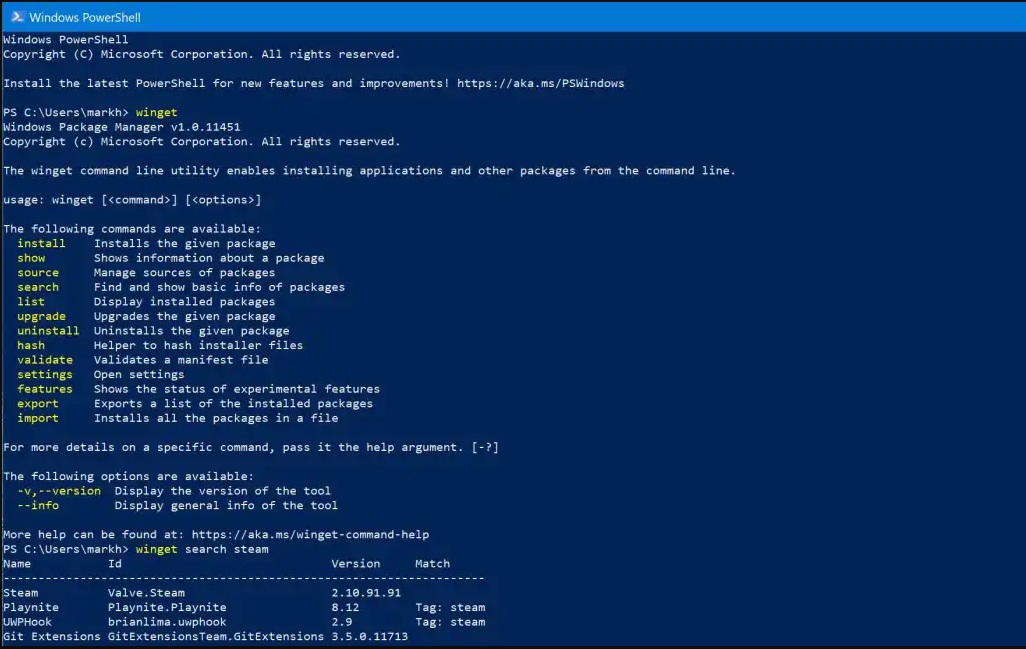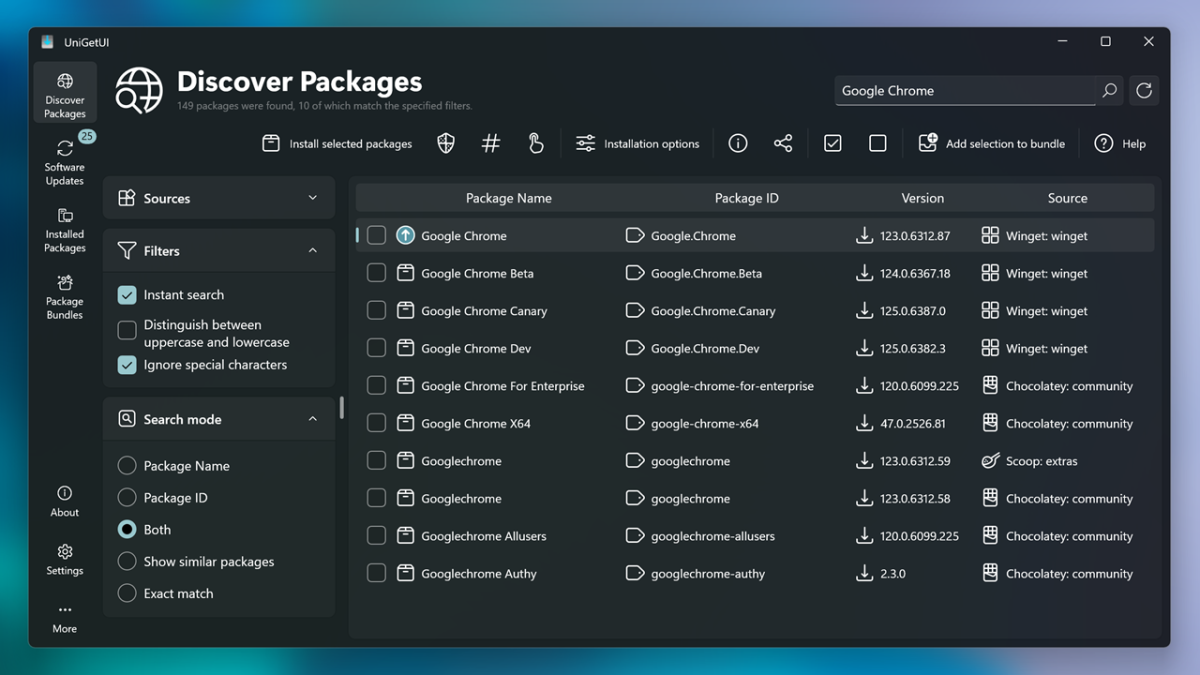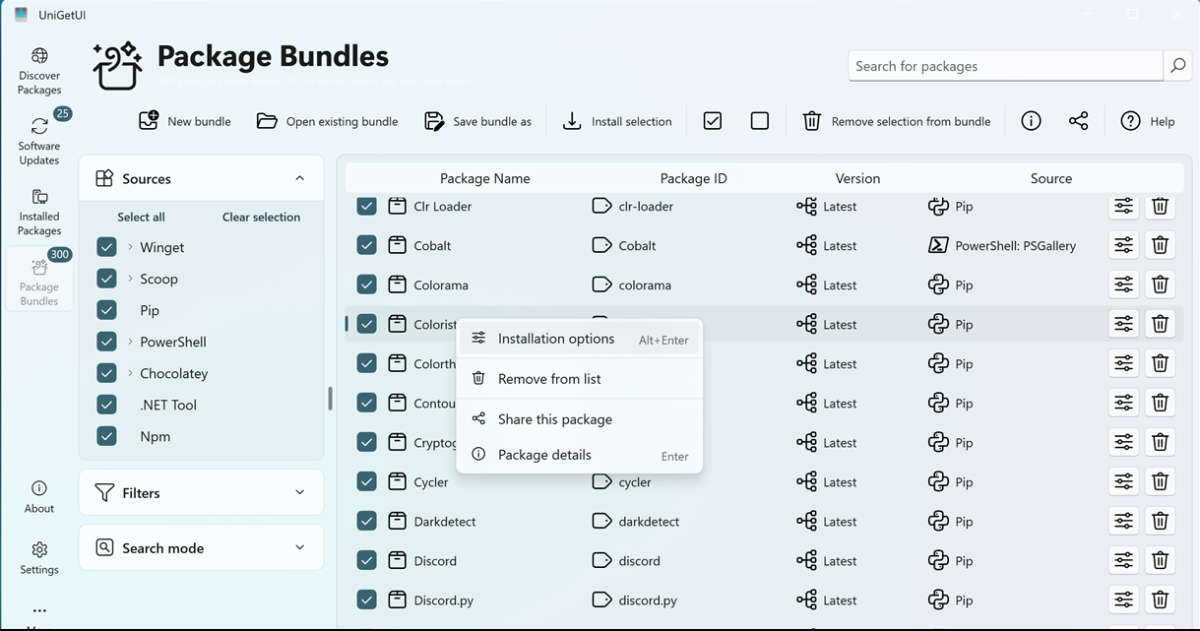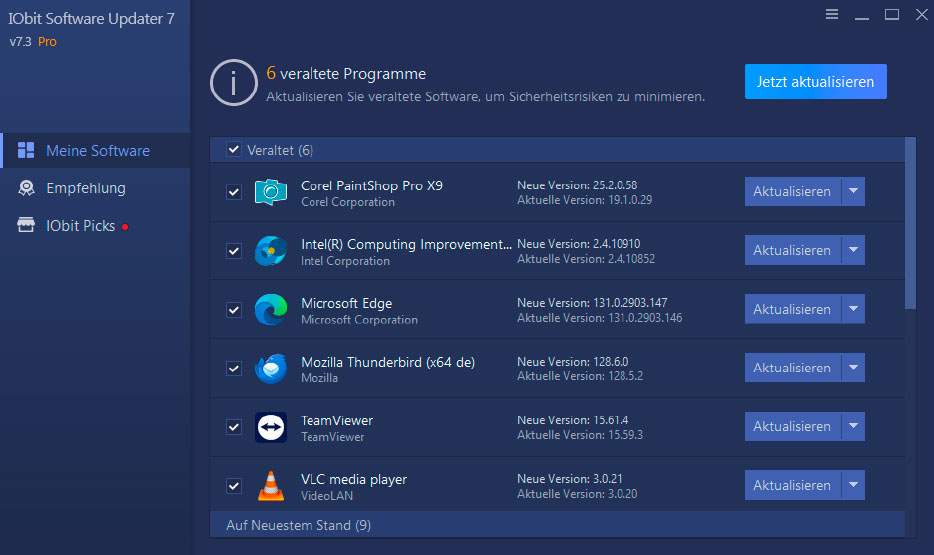Last year, several dangerous security vulnerabilities were found in the popular 7zip compression tool that were closed with new versions.
However, these patches had to be downloaded and installed manually in Windows. Even almost a year later, 7zip is probably still running in outdated and malware-prone versions on many PCs.
This would not have happened with a so-called package manager, which installs new program versions automatically and without intervention. In other words, just as has long been the case with smartphones, Linux, and Macs.
The same applies under Windows for apps from the Microsoft Store, provided the “App updates” option is activated in the Store settings. However, programs installed in the usual way are not updated automatically.
See also: How to make Windows 11 look like Windows 10
While package managers have long been standard on other systems, they have led a shadowy existence on Windows.
Tools such as Iobit Software Updater, Patch my PC, Secunia Personal Update Inspector, SUMo (Software Update Monitor), or Updatestar have existed for some time, but each has its weak points or is severely limited in its functionality in the free version.

When Microsoft launched its package manager for Windows, the tool could initially only be operated via the command line. This required considerable familiarization.
Foundry
First, however, we will explain Microsoft’s own package manager Winget, which is integrated in Windows 10 and 11 and which you actually have to control somewhat awkwardly via the command line.
Uniget UI makes everything simple
Operation became much easier with the graphical user interface called WingetUI, which stands for “Winget User Interface.”
This tool suddenly made it possible to install new software conveniently with the mouse and without the usual “Next” confirmations and to automatically keep programs already running on the PC up to date.
Because WingetUI is no longer limited to Winget, but also supports other console package managers, it has since been renamed Uniget UI.
See also: New Outlook: How to use offline mode and save emails locally
Installation: As Microsoft’s package manager, Winget itself is part of Windows 10 and 11, you only need to install the Uniget UI interface. During setup, make sure to install the tool for all user accounts in the first step.
Depending on the settings, you may need to allow Uniget UI to make changes to the system in User Account Control (UAC). You can carry out the remaining steps with all the default settings.
This includes, in particular, installing the additional package manager Chocolatey . Finally, click on “Finish” and Uniget UI will start automatically.
Before we go into the functions in more detail, you should activate the option “Ask for administrator rights only once” under “Settings > Settings for administrator rights” at the bottom left.
This will save you a lot of queries later on. If desired, you can also instruct Uniget UI to automatically install all available updates under “Update settings.”
However, you should deactivate this option first, as this way you can always keep an eye on the updates and familiarize yourself with Uniget UI.
The important functions of Uniget UI

UniGetUI
Uniget UI is configured during setup so that it starts automatically when the computer is switched on. You can recognize this by the new icon at the bottom right of the taskbar.
A green dot in the icon indicates that new software updates are available. At the top left of the program interface, you will see four important areas. Use “Discover packages” to install new programs; you can read more about this in the “Installing new programs” box below.
The “Software updates” are at the center of the following explanations. The third area “Installed packages” shows which programs are installed, similar to the Windows internal apps list in the Windows settings.
See also: Annoyed by Windows PC notifications? Here’s how to turn them off
However, Uniget UI sometimes lists significantly more entries here. This can be important because the tools can be removed from the system using the Uniget UI function “Uninstall selected packages.”
Finally, “Package bundles” is also used to install software. However, instead of installing them individually, several programs can be combined into a “bundle,” saved, and installed later on another computer in one go.
Installing new programs
In addition to the automatic updates of installed programs, Uniget UI offers another clever function, the “Silent Install.” This term refers to the installation of software without prompting: Instead of clicking “OK” or “Next” several times during the setup process, Uniget UI installs the software autonomously.
This is how it works: To install a program in this way, open Uniget UI, click on “Discover packages” in the top left-hand corner, type the name of the desired program in the search field on the right and confirm with the Enter key.
After a short moment, the program you are looking for will appear. Select it and install it by clicking on “Install selected packages.” Depending on the software, it is offered in several versions, which differ in terms of language, version number, and more. Select the desired version from these.
Two final notes: The possibility of combining several programs into a “package bundle” and saving them in order to install them in one go has already been mentioned in the article.
Secondly: If you want to change the installation settings for a specific program, deactivate the silent install of Uniget UI using the “Install selection” button at the top center. The usual confirmations with their change options will then appear during setup.

UniGetUI
Everything up to date with a click of the mouse
Checking the software on your computer for updates by hand is a thing of the past with Uniget UI. The tool does this automatically. As soon as the green dot or a Windows notification appears in the program icon in the taskbar, you open the tool interface.
All available updates are already selected and marked; click on the “Install selected packages” button to update everything to the latest version.
Uniget UI then downloads the updates and installs them; you can track the status or progress of each software below. The process may only be interrupted if the User Account Control (UAC) requires your authorization.
It runs fully automatically and without any intervention if you move the UAC slider all the way down to “Never notify” and confirm this setting with “OK.” Depending on the scope and number of updates, downloading and installing takes time. Finally, the confirmation “Hooray! No updates were found.”
If you want to temporarily exclude one or more program from updating, deactivate them in the list and only then start the update. If you want to defer one or more update completely, you can do this by clicking the “Ignore selected packages” button.
You can run the deferred updates again at any time via “Manage ignored updates” to the right.
Note: Do not be confused if sometimes only one and sometimes several appear under “Sources” when updating. A total of nine package managers or repositories are preset and active in Uniget UI; the tool automatically selects the appropriate source for each software.
Conclusion
The interface for Winget, Chocolatey, and others finally makes using package managers convenient under Windows. Instead of typing commands into the command line, with Uniget UI you can do everything with a click of the mouse.
The tool installs and updates almost everything beyond commercial software and thus closes existing security gaps, fixes errors, or activates additional functions.

Iobit Software Updater also points out outdated full versions such as Paintshop Pro (above) and offers an update. However, you may need a new licence.
IDG
By their very nature, package managers cannot install new versions of paid software, which is why they usually do not even display them.
This is where the full version of Iobit Software Updater Pro can help: The software offers unlimited updates for more than 700 programs and even does this automatically at the user’s request.
The tool compares the installed versions with a database and installs any missing updates automatically.
Note: If you use two or more package managers, the results may differ in detail. Sometimes one of the tools shows a new software version that is still missing in the database of the other.
Sometimes there are also different deployment cycles, for example standard and long-term versions (ESR). This is not a “fault” of the package manager, but is due to the version installed by the user.
The Windows update not only brings and keeps the operating system up to date, but also updates other Microsoft programs and increasingly even hardware drivers.
At the same time, the Winget package manager, which is also integrated into Windows, offers the option of automatically updating the software installed on the PC.
Now Microsoft just needs to put one and one together and merge the two previously separate processes into one function — this function was recently announced. When the Windows update then reports “You are up to date,” you would know that this is really the case.
This article originally appeared on our sister publication PC-WELT and was translated and localized from German.




